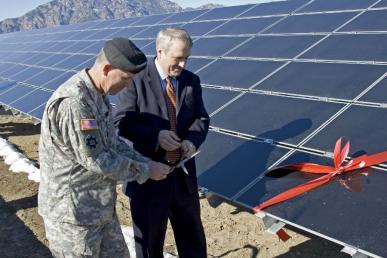 Carbon is typically considered enemy number one in the context of climate-altering pollution. There is good reason why. Carbon dioxide (CO2) emitted from power plants is the leading source of U.S. greenhouse (GHG) emissions. Beyond our borders, the historic level of 400 parts per million of GHGs entering into our earth’s atmosphere was passed just five months ago – an indication of the rapid rise in human-produced emissions.
Carbon is typically considered enemy number one in the context of climate-altering pollution. There is good reason why. Carbon dioxide (CO2) emitted from power plants is the leading source of U.S. greenhouse (GHG) emissions. Beyond our borders, the historic level of 400 parts per million of GHGs entering into our earth’s atmosphere was passed just five months ago – an indication of the rapid rise in human-produced emissions.
And while reducing carbon pollution is the primary goal of EDF’s climate agenda, so is minimizing methane emissions from natural gas development. That’s because methane, the main ingredient in natural gas, is a powerful GHG that can cause major climate damage in the short term. In fact, a recent analysis by many of the world’s top experts on evolving climate science, the Intergovernmental Panel on Climate Change (IPCC), reports methane to be at least 84 times more potent than CO2 over the first two decades. On a 100-year timeframe, methane is at least 28 times more potent. These are noticeable changes in methane’s Global Warming Potential (GWP) from the IPCC’s last assessment in 2007, with values raised from 72 to 84 and 25 to 28, roughly a 17 percent increase on a 20-year time horizon and a 12 percent increase on a 100-year basis.
IPCC’s fifth assessment (AR5) also quantitatively discusses two additional indirect effects that further increase, albeit modestly, methane’s GWP. First, IPCC considers climate-carbon feedbacks and reports two sets of GWP values: one that accounts for the feedbacks and another that excludes them (they conclude that including this effect is “likely” to give a more accurate estimate of climate impacts from emissions of greenhouse gases like methane or CH4). The 20-year GWP for methane with feedbacks increases from 84 to 86, with the 100-year GWP up from 28 to 34. The explanation for this feedback is diminishing ability of oceans and soils to absorb carbon dioxide as the climate warms. As a result, as methane emissions warm the climate, more CO2 that would have historically been absorbed by the land and ocean remains in the atmosphere, causing additional warming. The second effect now quantified by the IPCC is the production of additional CO2 as CH4 is oxidized in the atmosphere, which adds another point or two to methane’s GWP.
Read More »











